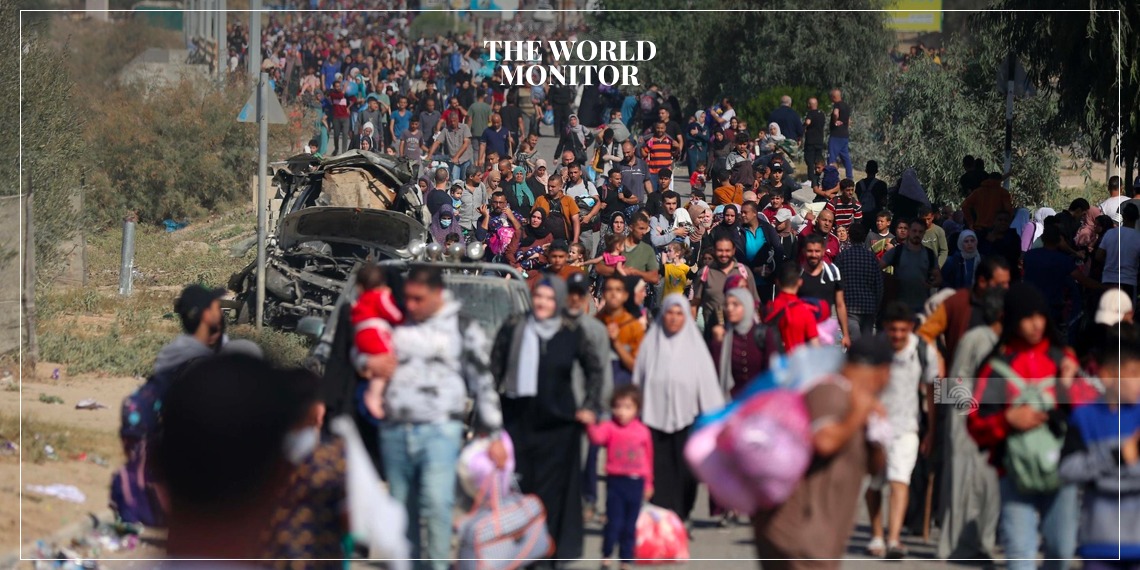There is a growing likelihood that Palestinians from northern and central Gaza will be forced to migrate southward, potentially attempting to cross into Egypt due to the intensifying Israeli bombardment. This alarming scenario has been highlighted in warnings issued by Palestinian, Egyptian authorities, and the United Nations.
Philippe Lazzarini, the head of the United Nations Relief and Works Agency for Palestine Refugees (UNRWA), has recently stated that the renewed Israeli attacks on the densely populated southern Gaza could compel about a million refugees, including 900,000 residing in UN buildings, to attempt crossing into Egypt.
A statement released on UNRWA’s “X” platform last Saturday indicated, “If fighting escalates, residents are likely to flee southwards and beyond the borders.” Lazzarini warned that the Israeli offensive could push a million refugees towards the Egyptian border.
A day earlier, Egypt’s Ministry of Foreign Affairs condemned the resumption of hostilities, stating, “Egypt warns of the consequences of expanding Israeli military operations in southern Gaza and Israeli officials’ calls for the displacement of Palestinians beyond Gaza’s borders, a blatant violation of Israel’s obligations as the occupying power and of international humanitarian law, particularly the Fourth Geneva Convention of 1949.”
The statement also reaffirmed Egypt’s position against the forced displacement of Palestinians, considering it a “red line that must not be crossed.”
The ceasefire between Israel and Hamas, extending from November 24 to the morning of December 1, has ended, resuming battles that have so far resulted in hundreds of casualties and injuries in Gaza.
Border Crossing Plan
Palestinian political analyst Talal Abu Rakbeh doesn’t see this plan as new. He told “Sky News Arabia” that the Israeli military has been pushing Palestinians towards southern Gaza since the war began, as it is considered a zone for assistance.
However, he noted that the recent intensification of Israeli pressure reveals plans including:
Invading the central and Khan Yunis areas to increase psychological and moral pressure on Palestinians to move southward under the guise of relocating to a safe zone.
Potentially leading to an international intervention to find solutions for the crisis, possibly including relocating displaced persons to other countries, thereby resolving the crisis for Tel Aviv.
Aiming to annex more lands in Gaza, creating a buffer zone at the Israeli borders and preventing displaced Palestinians from returning to their homes post-war.
In January 2008, hundreds of thousands of Palestinians attempted to breach the Egyptian border, succeeding after Palestinian militants detonated a part of the border wall between Gaza and Egypt, citing the need to rescue residents from the Israeli blockade. Egypt, however, refused to allow them to stay.
Complex Map
Last Friday, the Israeli military published a complex map indicating the movement of Gaza’s population in the next phase of the war. The map, shared by Israeli military spokesperson Avichay Adraee, showed numbered “block” areas for evacuation in northern and southern Gaza, urging residents to locate their relevant block and prepare for potential relocation.
With the growing warnings of an escalating humanitarian crisis, the Biden administration is pressuring Israel to allow humanitarian aid into Gaza at pre-ceasefire levels, as reported by “Axios.” Following a phone call by U.S. Secretary of State Antony Blinken to Israeli Strategic Affairs Minister Ron Dermer, Israel permitted approximately 50 trucks loaded with aid to enter southern Gaza. An Israeli official also stated that around 100 aid trucks, including two with fuel, were allowed into Gaza on Saturday.






